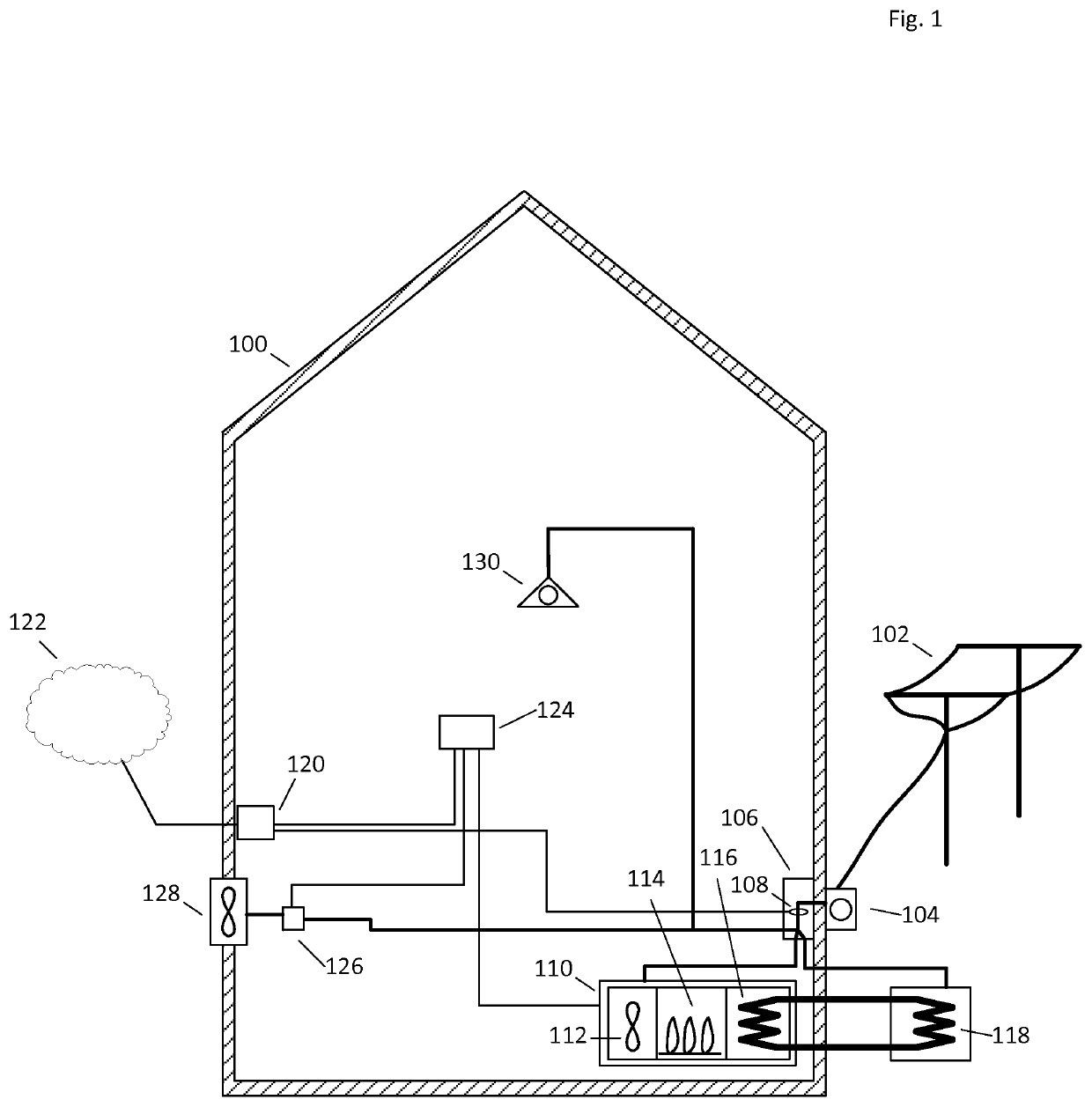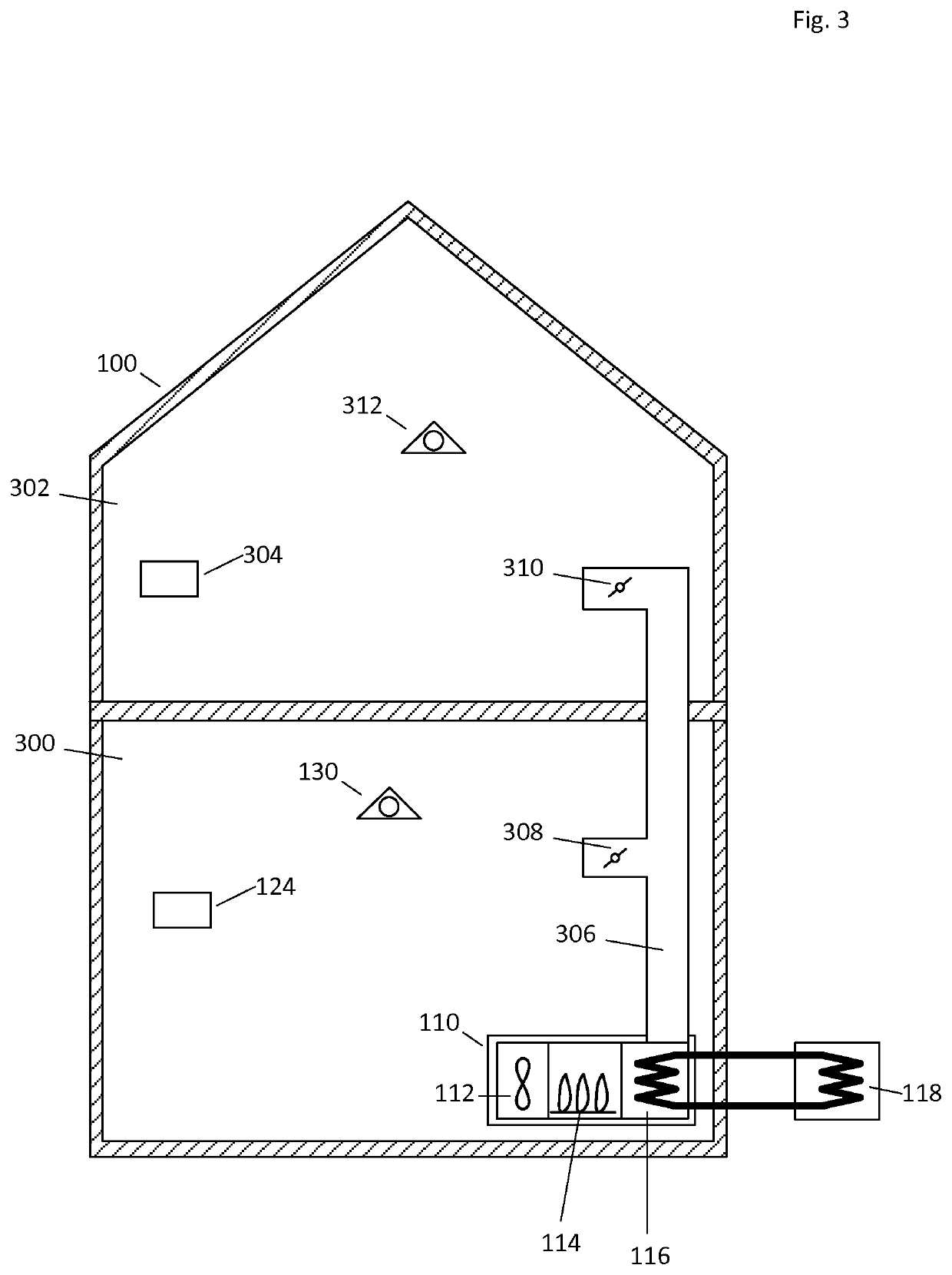Consumers are suffering from
electricity bills they find excessive, utility companies are suffering from overloaded grids, and the transition toward
renewable energy underway in many advanced economies will only make these problems worse since most renewables cannot be scheduled; e. g.,
wind power is quite cheap when the wind is blowing, but unavailable when the wind is not blowing, and
solar power is only available when the sun is shining.
The problem is that there are not many systems available that allow electricity consumers, and in particular residential and commercial, as opposed to industrial, consumers to adapt their electricity use patterns to real-time prices.
The second group of solutions in the
patent literature are complex, centralized systems where a central
system at the utility maintaining the grid communicates with systems at the customer site to switch electrical loads on and off.
These systems have a number of serious disadvantages that limit their efficiency, effectiveness, adoption, and sophistication, however.
If this is done by a central command to all loads at once, the
power grid may not exactly get stabilized from all of these loads going on- and offline at exactly the same time; if each device is addressed separately, there is a lot of
data traffic to carry, and it is not easy to decide on an equitable
system to determine which customer gets shut off when.
These systems also don't offer a lot of flexibility since the communication is one-way and thus the customer is not able to communicate special situations: for example, someone may normally be willing to have his
air conditioning shut off during peak times, but may very much want the
air conditioning on a few occasions when his child is sick or he is hosting an important visitor.
Relying on centralized decisionmaking also introduces a central point of failure.
Finally, relying on a centralized structure creates regulatory and psychological hurdles to adoption of new, innovative ideas: The electricity grid is heavily regulated, and adoption of innovations will often require the approval of legislators or regulators, which at the very least tends to be time-consuming.
These more advanced centralized systems ameliorate the problem of the decisionmaker, i. e., the
utility company, not having information about each customer's wants and needs, but they exacerbate most of the other problems we discussed.
If the
communication channel between the
utility company and the customer site breaks down, the customer might be stuck without properly functioning heating and air conditioning, even though the
power grid itself works perfectly well.
The adoption of new ideas is difficult since everything at the customer site is tightly coupled to a huge
system with lots of organizational
inertia.
Consumers may also not be particularly willing to transmit information about each electrical device they are using to a power company.
Specifically, this patent teaches a tight integration between computer systems owned and managed by the utility and computer systems with a central
server “configured to exchange customer site information comprising measured information, predicted information and customer input information with each of the customer sites.” This approach brings all the disadvantages of centralized systems we have discussed above.
Although the approach of setting temperature setpoints instead of controlling an air conditioning compressor or a furnace directly simplifies the math and improves
backward compatibility, it also reduces
cost efficiency because the optimizer cannot control the load directly to place usage in time intervals with the lowest energy costs.
In particular, controlling temperature setpoints instead of controlling the discrete states of the air conditioning compressor or other equipment makes it hard or impossible to
exploit short-term fluctuations in energy prices.
(Of course, one can control an air conditioning compressor or furnace by setting a thermostat's temperature setpoints to very low or high values that are guaranteed to force the device on or off, but at this point the problem degenerates into an
integer programming problem and techniques like linear or quadratic
programming will not arrive at a satisfactory solution.)
US
Patent Application 2012,018,5106 goes beyond optimizing continuous variables such as temperature setpoints and formulates a problem of power-
grid optimization explicitly as an
integer programming problem, which “then can be solved using Optimization
Subroutine Library OSL, CPLEX®.” Unfortunately, the Application does not quite explain how exactly these libraries are to be used, but presumably the idea is to use their mixed-integer
programming subroutines which employ
branch-and-bound or supernode
processing and impose serious restrictions on the permissible models and objective functions.
Even ignoring the cost of the CPLEX
library and the hardware to run it on, the solution proposed would appear rather hard to adapt to applications like a residential thermostat that typically uses a
microcontroller with severely constrained memory and computational resources, and the Application does not contemplate such a use.
The use of method like
branch-and-bound or supernode
processing implies serious restrictions of thermal and energy models that can be used which may make it difficult to adapt the method to real-world problems, and even with well-chosen models will often have trouble finding an optimal solution.
It does not however, disclose how, specifically, this is to be done.
From this review of the prior art a certain
malaise in controlling electric loads, and
HVAC systems in particular, with respect to energy prices becomes apparent.
The prior art has recognized this to be a problem in need of a solution for quite some time, but the existing proposals suffer from severe problems.
Centralized solution methods either are very crude and control different loads with different business needs in the same way, such as by simply shutting them off, or become computationally infeasible.
Attempts at more sophisticated control that takes the business needs of each location into account propose methods that will not work very well or not at all, or simply don't suggest any particular method how to solve the problem.
 Login to View More
Login to View More  Login to View More
Login to View More 


